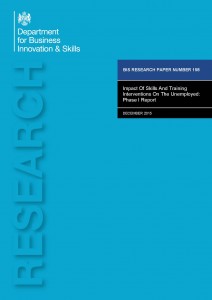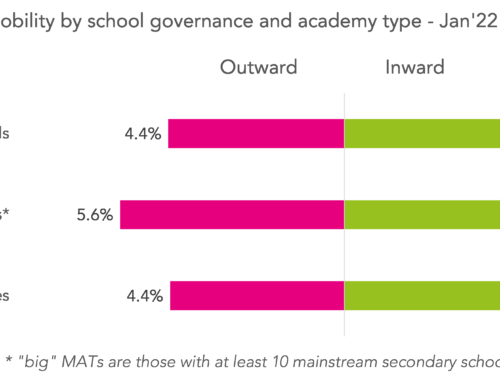In this project with Peter Urwin and Augusto Cerqua we analyse the returns to FE learning using matched ILR-WPLS administrative data. This programme of investigation identifies good labour market returns to FE learning, and compelling evidence that previous less favourable findings
We create data for two cohorts of individuals; one starting an active (job-seeking) benefit claim between April 2005 and April 2009; and the other starting an active benefit claim between August 2010 and July 2012. The focus of analysis in the first cohort is on those becoming unemployed between 2006 and 2008, which covers the New Deal (ND) policy period; and analysis of the second cohort focuses on the 2011-2012 population, which covers the Work Programme (WP) period, and there are approximately 2.3 million unemployed individuals in each cohort. Our analysis of Cohort 1 during the Short Term Unemployed (STU) phase identifies 0.35 million individuals (15% of the total 2.33m inflow) with some form of FE learning aim within the ILR (that could be either achieved or not achieved); and 0.48 million FE learners amongst the unemployed individuals of Cohort 2 during the STU phase (20% of the total 2.34m inflow).
Conclusions
The findings presented in this report are part of a wider investigation that confirms the appropriateness of information contained in the matched WPLS-ND-ILR-LMS dataset as a resource for estimating the impacts of training undertaken by the unemployed within FE. The discussion underlines the strong selection effects at work when we compare the general population of unemployed with those who we observe in FE learning. More specifically, when considering the entire population of unemployed in Cohort 1 and Cohort 2, we see FE learners having much worse prior labour market histories, but better outcomes – and this ‘negative selection’ into FE seems even more pronounced amongst those of Cohort 2.
The employment rate of 18 to 24 year olds in Cohort 2 who engage with some form of FE learning increases from 49% in the year before claim start date to 68% one years after. For those who do not undertake FE learning in Cohort 2, the prior rate of employment is much higher at 55% and the proportion in employment one year later is lower at 67%. The employment rate of those who do not take up FE learning amongst Cohort 1 goes from 61% in the year before claim start, to 71% one year after; compared to a rise from 58% to 71%, amongst those who undertake FE learning.
We also see much higher proportions of FE learning amongst the most disadvantaged groups – for instance Group 3 who have no HMRC employment recorded in the 5 years prior to claim start date are the group with the highest proportion of FE learners. This suggests that we still observe the sort of negative selection effects amongst the unemployed that have confounded estimates of returns to low level vocational learning using survey data.
However, with up to 60 months of prior labour market history; a number of indicators that go back 8 years before claim start date; and the potential to create non-achiever control groups that overcome such negative selection effects, this Phase I report shows that the ILR-WPLS-ND-LMS dataset can capture such effects and arrive at robust returns to FE learning for the unemployed – justifying the commissioning of Phase II. The opportunity to also create alternative control groups from the general population of unemployed who do not undertake FE Learning, but who are flagged for basic support in the LMS [Client Segment 1)], also provides an important opportunity to compare returns to FE learning, against a more general control group who do not experience FE.





Leave A Comment